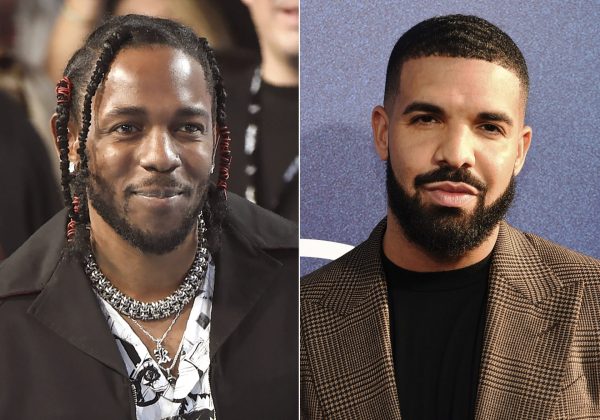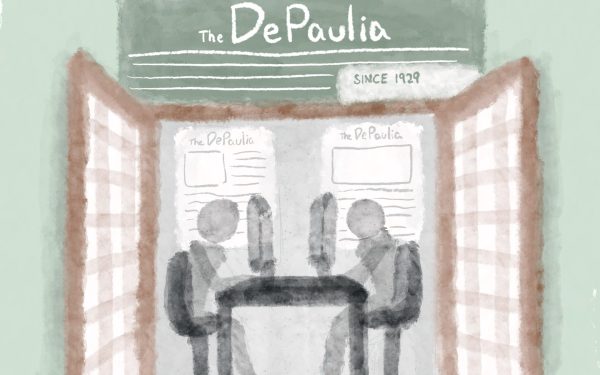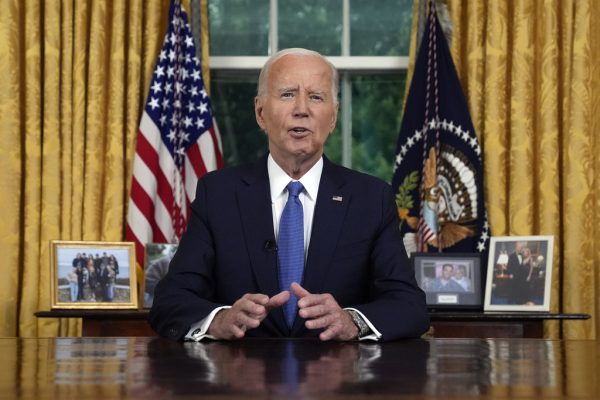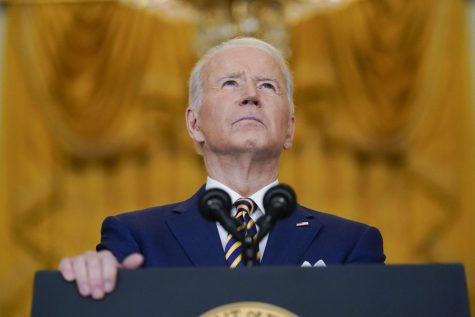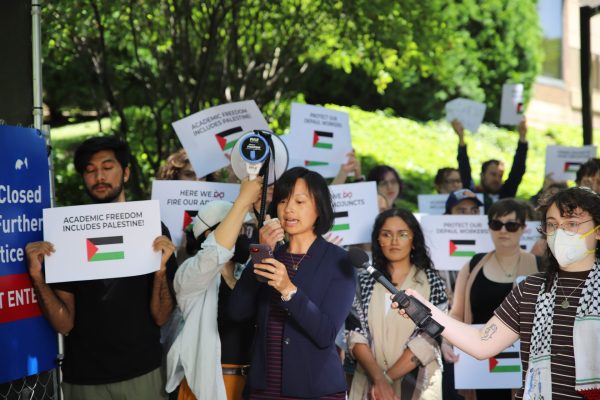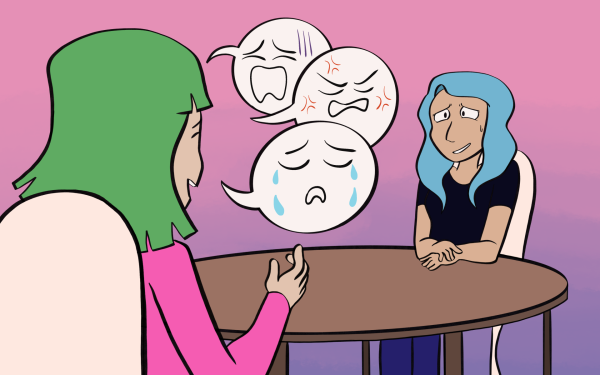OPINION: ‘Not all men’ negates the experiences of survivors everywhere
On March 3, Sarah Everand was kidnapped and killed while walking home in South London.
I can’t imagine the anxiety Everand felt when walking home alone, or how she felt when she was approached by Wayne Couzens, a London police officer of the Metropolitan Police’s protection command.
Couzens, who was on a specific protection police patrol, murdered Everand.
She did everything she could to ensure her safety. Everand walked a well-lit route. She talked on the phone with her boyfriend, describing her movements and her whereabouts. She did everything society’s victim-blaming culture shames women into doing to be responsible for their own safety.
The world failed her. The world failed the eight people, seven of which were women, six of them of Asian descent, who were killed in the Atlanta Spa shootings back in March, too.
Whenever there is an event of sexual violence or gender violence around the world, there is a generalized rhetoric that always comes up, that it’s “not all men” who are capable of this type of violence or abuse. People use the “not all men” trope in other instances too, but the phrase is mostly used in conversations about gender violence.
Whenever someone says “not all men,” they are missing the point.
The term “not all men” does nothing to combat the issue of rising sexual and gender-based violence. It does nothing to diminish the intersectional violence within gender, race, age, sexuality and economic factors. Every 73 seconds in the U.S., a person is sexually assaulted.
In a 2015 report, 47 percent of transgender people reported being sexually assaulted at some point in their life.
Saying “not all men” does not diminish the fact that society hypersexualizes and objectifies the bodies of gender nonbinary people, cis and transgender women.
For people of color, 65 percent of American Indian people, 58 percent of Middle Eastern people, 53 percent of Black people and 55 percent of Asian women have been sexually assaulted.
Saying “not all men” does not change the perspective of how the white male gaze considers people of color as degradable and accessible.
The “not all men” rhetoric also creates a binary that there are only men who carry out violence and men that do not. It defends patriarchal and hypermasculine myths that men can’t also be at risk or survivors of sexual violence when they in fact, are.
40 percent of homosexual men, 47 percent of bisexual men and 21 percent of heterosexual men have also experienced sexual violence. 46 percent of homosexual women, 75 percent of bisexual women and 43 percent of heterosexual women have too during their lifetimes.
1 in 3 women globally have experienced a form of sexual or physical violence. This figure does not even include the rates of sexual harassment that women endure.
A 2018 report from the Femicide Census showed that a woman was killed by a man every three days in the U.K.
In a report from the United Nations Office on Drugs and Crime, a total of 87,000 women were intentionally killed in 2017. Thirty thousand of these victims were killed by a current or former intimate partner due to a prior culmination of gender related violence.
But we say “all men” because we don’t know which ones are out there to hurt us. It can be boyfriends, husbands and family members. We say “all men” because even those designated to protect, harm us. A cop who was assigned for protective patrol murdered Sarah Everand.
Saying “not all men” does not combat these numbers. It won’t bring back the lives that were lost.
It says nothing about the risks, statistics and high rates of violence that is perpetuated in our society.
Annie Toner, a DePaul senior studying secondary education believes that the term “not all men” is used as an escape route for men to not take responsibility for each other whenever anyone is the victim of violence by the hands of another man.
“Many men are inclined to use it in order to take the blame off of them,” Toner said. “Men reject that this behavior is a patriarchal norm that most men are raised in and ‘not all men’ users use this to convince others that they are different from men who abuse. They do not want to be grouped in with the men who are like that, but they don’t want to take accountability towards making a change.”
Without men taking responsibility for each other and having conversations about situations of sexual assault and violence, it is women and other survivors who are leading these conversations. Do not correct us when we say “all men.”
For the men who flaunt the “not all men” approach –– if you don’t want to be grouped with these types of men, then do more to make sure there is no group in the first place.
Jacob Stump, an international studies professor at DePaul, explains the ways in which patriarchal structures that fuel sexual violence and gender violence are carried out by both women and men in society. Stump describes the reasons as to why some women may use the “not all men” approach too, which perpetuates the harm imposed by the patriarchy.
“I would imagine that using this phrase is a way for some men and some women who talk about their men to indicate their innocence,” Stump said. “Many women [too] directly support a range of patriarchal practices.”
“We” are not just people who identify as women, but “we” are everyone who is at risk of being the targets of sexual violence and gender violence. “We” are those who are affected by societal structures of sexism, victim blaming and intersectional violence.
“For women, it is safer to have an ‘all men’ perspective,” Toner said. “We know it’s ‘not all men,’ but actively taking precautions to protect themselves from those who are like that can lead to a woman’s safety.”
I say “all men” because when I walk alone or even with my friends, I don’t know which men are the ones I have to carry pepper spray, a rape alarm and a glass-breaking device to potentially use for my defense.
The fear that leads us to say “all men” does not only weigh us down mentally and emotionally –– but physically too, with what we have to carry in our pockets.
The issue with saying “not all men” is that it’s a deflection and serves no purpose other than to vouch for male innocence. It tells survivors the issue can be reduced to good apples and bad apples.
It fails to acknowledge the behaviors in our society that are intersectional and systemic. It shifts the focus to the idea that some men are inherently good rather than addressing how society creates or protects those who are not. It enforces individualism in our society by focusing the issue on individual men rather than the entire system that enables male violence and abuse.
A seemingly beautiful candy-red apple can still have a worm in it. The worm didn’t just appear there — an environment was sustained that allowed it to flourish.
“People understand that ‘not all men’ is true, not all men participate in this awful behavior, but enough of them do,” Toner said. “I believe men need to stop giving themselves and their peers a platform to let these behaviors continue. Men who are a part of the ‘not all men’ narrative but continue to let their friends or others around them are the problem as well. To have women lead these conversations is insulting and men need to step up.”
If you are tired of hearing the “all men” trope, imagine how tired the people working to combat the real issues of racism, sexism, sexual violence and gender violence are.
“Sexism is a historically durable dynamic and there isn’t a single fix,” Stump said. “It takes time to change hierarchies that have been maintained over centuries.”
“Not all men” may look like three innocent words. But when they are typed to deflect and ignore a systemic issue being brought to light, they invalidate survivors’ suffering.
Hold each other accountable. Society holds women accountable for their daily safety enough.



